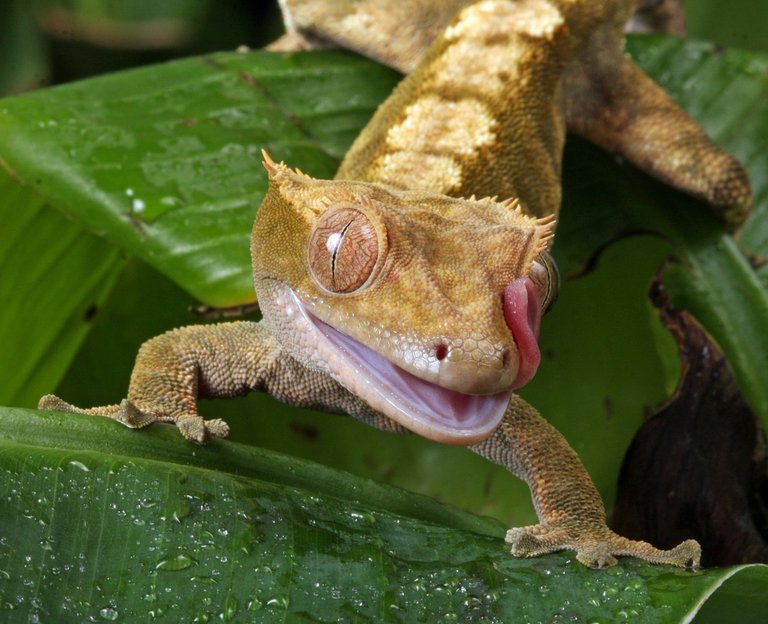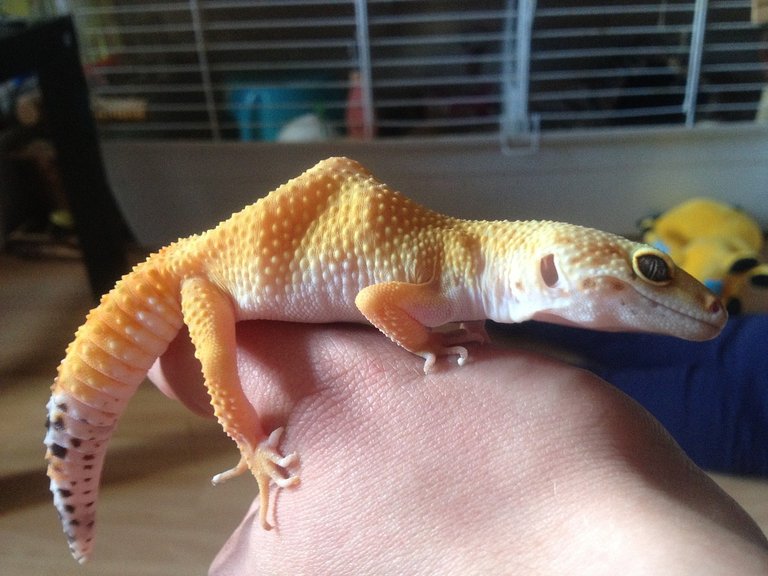Geckos aren't the best friends for people in this part of the world where I come from. It is referred to as Omo Onile in yoruba in what could be referred to as the assistant owner when interpreted. This is because they are found in almost every home especially when the home is close to the bush. There are a lot of superstitious believes when it comes to wall geckos but one thing is real about them, and that is their ability to stick to any thing without gripping.
Gecko is able to move on walls, metals, woods, and glass. It is able to hold tight to a thing and remove its feet with ease when moving. If its sticking to things had to do with gripping, we could expect it to fall when it tries to move from one place to another but it looks like its entire body sticks and so it could even twist on a pole while trying to move around the pole without falling. So what do Geckos have that give them this ability, and how has science improved on it?
These interesting fall legged crawling animals are able to walk on wall with over 60% of the 1500 species of Geckos walking the walls and these animals have mastered the act of sticking for millions of years. This animal has been a wonder for years even as far back as the days of Aristotle in the year 330BC. Geckos do not secrete any sticky substance like the tree frog or snails, yet they are able to stay on anything without any problem, so how do they do it? Scientists used to think it was the ridges in their toes which looks physically like having a fingerprint was the secret behind the sticking, maybe they pushed down on the ridges to form a suction like that on the body of octopuses. Scientist also once thought they used microscopic fingers to grab on to surfaces but after lots of studies, we found that it is not so.
With an electron Microscope on the palm of geckos it showed that they have millions of hairs on their known as Setae which are covered with tiny bristles which looks like spatulae. You see what I just mentioned is responsible for allowing the toes of the gecko to make contact with the surface, and stay there on a nano scale. Which means that the ability of geckos to climb a surface is on a molecular scale as their surfaces interact on a molecular level using Van der waal force.
Personally, I will not hold a gecko like the picture above, I ave one or two things about them that scare me, from their eyes to how sticky they can be on almost all substance. That said, let's continue on the stickiness of their palm. While the charges on the surface of the gecko foot and the object they are climbing are negatively charged, the atoms on the both surfaces have positive nuclei and negative electron. Since electrons are always moving around, they can be more on one side than on the other side which makes the side where it is more present to be more dense and negatively charged leaving the other side to be positively charged known as a Dipole. The tiny changes in the electrons of the surfaces and that of the gecko feet is responsible for the attraction of the surfaces to one another. This will work for all surfaces that contributes to Van Der Waal force but the gecko will not stick to surfaces that do not contribute to Van der Wall Forces such as a non-stick pan.
For Geckos to let go of surfaces, muscles in their limbs help to release the hairs in the surface, thereby letting go of the grip. Scientist have started to work on using knowledge from geckos feet to create sticky pads that are able to hold on to surface and not lose their grip over time even when they are reused very often.
https://royalsocietypublishing.org/doi/10.1098/rsfs.2015.0015
https://www.pnas.org/doi/full/10.1073/pnas.0408304102
https://www.pnas.org/doi/full/10.1073/pnas.192252799
https://pubs.acs.org/doi/10.1021/acsami.5b08934
https://royalsocietypublishing.org/doi/10.1098/rsta.2007.2173
https://frontiersinzoology.biomedcentral.com/articles/10.1186/s12983-018-0273-x
https://onlinelibrary.wiley.com/doi/full/10.1002/adma.201104191
https://journals.plos.org/plosone/article?id=10.1371/journal.pone.0134604


